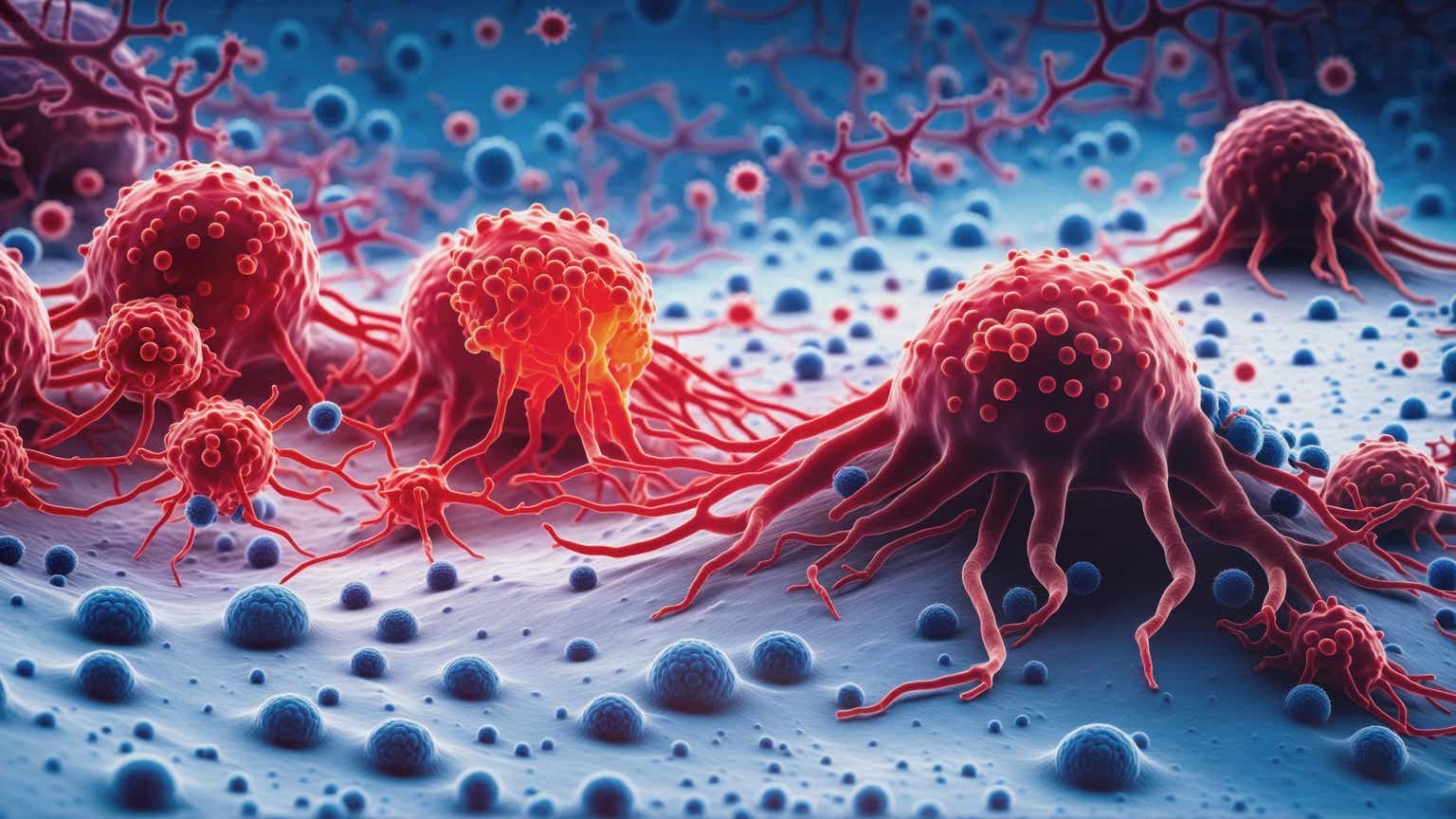By Christopher Gannatti, CFA
At WisdomTree, we work with Dr. Jamie Metzl on a strategy that we refer to as the BioRevolution. We believe that we are on the precipice of a remarkable period that could last a few decades where we challenge and ultimately evolve how we do such things as:
- Handle human health care.
- Consider growing food for an expanding global population.
- Generate novel materials, chemicals and energy from biological sources.
- Think about storing massive amounts of data with higher density and fidelity than we have in the past.
Dr. Metzl recently published the book, Superconvergence: How the Genetics, Biotech, and AI Revolutions Will Transform our Lives, Work, and World. We aim to publish a series of blog posts that draws attention to some of the ideas presented in the book.
The bottom line: Thematic investing, in a sense, is about storytelling. Superconvergence does a great job to convey the narrative behind the WisdomTree BioRevolution Index, which is tracked, after fees and expenses, by the WisdomTree BioRevolution Fund (WDNA).
Your Immune System Is Powerful
It’s amazing to consider the power of the human immune system. I can remember catching the chicken pox when I was five years old. While it was annoying at the time, the story my parents kept repeating was that you catch it now and you never get it again. I didn’t yet realize it, but it was a good model for thinking about how vaccines work.
The immune system has a built-in “memory.” Once it encounters a particular pathogen, usually a bacterium or virus, certain cells are able to remember these so-called invaders and mount a much more effective response in subsequent encounters.
Unfortunately, while we tend to get chicken pox only once, when we dig into why we can get the common cold so many times, we realize that the pathogens can mutate. With the common cold, technically, we are getting many different variations of a substantially similar infection. This is also why so much attention was paid during the COVID-19 pandemic to the different mutations of the virus.
What Is CAR-T Therapy?
Our collective human understanding of diseases and the immune system has evolved immensely. In the late 1800s, there were two major discoveries that began the path to our current understanding1:
- Elie Metchnikoff identified phagocytic cells, which can attack invading pathogens.
- Emil Behring and Paul Ehrlich identified antibodies, which can neutralize microbial toxins.
Now, it’s one thing to have that initial understanding of the immune system and quite another to consider giving the immune system instructions to do specific, useful things.
Here is where we can introduce the concept of chimeric antigen receptors, the “CAR” in CAR-T therapy.
From Superconvergence:
Our T-cells, a foundation of our natural immune systems, differentiate between our own cells and those of dangerous foreign invaders. These cells function like hall monitors in a restrictive elementary school, always on the lookout for who shouldn’t be there. But instead of sending the perceived intruders back to class, they release enzymes knocking them out and make a note to keep a wary eye out should they ever come back. To take advantage of this naturally occurring process as a gene therapy, a person’s blood is drawn and the T-cells are extracted and then genetically enhanced to more strongly express the chimeric antigen receptors (CARS) giving them disease-fighting superpowers. After the patient’s other T-cells have been depleted by chemotherapy, these enhanced cells, with added genetic targeting instructions, are reintroduced with an increased ability to repopulate. There are many variations on this theme.
In a high-profile 2022 trial, a British teenager from Leicester named Alyssa, who was suffering from an aggressive cancer, T-cell acute lymphoblastic leukemia, in which her immune cells were attacking each other and who was not responding to other interventions, was treated with modified immune cells taken from a donor.
Reengineering the donor’s T-cells to replace Alyssa’s malfunctioning ones required editing the donor’s T-cells to disarm their natural targeting mechanism so they wouldn’t attack Alyssa’s body, removing a chemical identifier on the donor T-cells so the new cells could evade detection, and giving the donor cells an additional ability to be impervious to a specific chemotherapy drug. The modified donor T-cells were then edited to attack the specific genetic marker of the patient’s malfunctioning T-cells. After the modified donor cells were introduced, Alyssa had another bone marrow transplant so the modified cells could repopulate in her body. It was a painstaking and expensive process but, incredibly, it worked. So far, the cancer cells have cleared from Alyssa’s body.
We’d note that – while any success in fighting cancer is exciting – as is the case with many developments discussed in Superconvergence – it feels like CAR-T therapies are on the cusp of a potentially massive breakout of different use cases. However, success is far from guaranteed, and we must respect the complexity of the underlying biological processes.
A New Line of Attack on Childhood Brain Cancer?
Now, besides having read Superconvergence, the catalyst that led to my wanting to write this article was seeing the following title to an article in the journal, Nature:
This Childhood Brain Cancer Is Incurable – But Immune Therapy Holds Promise: CAR-T therapy, which harnesses a person’s own immune cells, racks up some astonishing success stories against deadly brain tumours in children.2
The article notes that a five-year-old in Seattle, Washington, has received 70 CAR-T treatments and counting, and that the growth of a diffuse midline glioma (brain and spinal tumor) has been held in check. Doctors are actively seeking to determine why, and, for the time being, the result of this single case is more an outlier. The results observed across a broader trial, at least so far, have not yielded as much in the way of success. Still, we are discussing a type of cancer for which there aren’t really any other options.
CAR-T treatments have yielded better results in treating blood cancers than they have in treating solid tumors, such as those found in the lungs or the brain. With these types of tumors, the therapy needs to be able to deal with different mutations of the cancer cells as well as delivering a sort of “penetration effect” to go beyond the top layer of the tumor itself.
Possible Applications in Autoimmune Diseases
A different article, published in Nature Biotechnology, indicated two rather interesting studies regarding other possible use cases for CAR-T therapies3:
- The first clinical findings showing that CAR-T cells can deplete problematic immune system B cells in progressive multiple sclerosis were published in March 2024.
- In June 2024, a phase 1 study in patients with systemic lupus erythematosus was presented by iCell Gene Therapeutics at the European Alliance of Associations for Rheumatology Congress in Vienna. It showed that a CAR-T therapy eliminated all autoantibodies in 11 out of 12 treated patients.
We wrote about mRNA here, and it’s admittedly intriguing to see another case where a therapy is showing possibilities of success beyond an initial use case. With mRNA, we all recognize the efficacy in terms of the Covid-19 vaccine, but it really represents a platform upon which many different therapies can be built. Maybe CAR-T, characterized by being further along in the treatment of certain blood cancers, will also be able to showcase a broader set of use cases.
We are excited to see how things continue to evolve in this space.
1 Source: SHE Kaufmann, “Immunology’s Coming of Age,” Frontiers in Immunology, 4/3/19. Updated 6/6/19.
2 Heidi Ledford, “This Childhood Brain Cancer Is Incurable—But Immune Therapy Holds Promise,” Nature, 7/25/24.
3 Source: Charlotte Harrison, “CAR-Ts Sweep into Autoimmunity,” Nature Biotechnology, July 2024.
Important Risks Related to this Article
For current holdings of WDNA, please click here. Holdings are subject to risk and change.
There are risks associated with investing, including the possible loss of principal. The Fund invests in BioRevolution companies, which are companies significantly transformed by advancements in genetics and biotechnology. BioRevolution companies face intense competition and potentially rapid product obsolescence. These companies may be adversely affected by the loss or impairment of intellectual property rights and other proprietary information or changes in government regulations or policies. Additionally, BioRevolution companies may be subject to risks associated with genetic analysis. The Fund invests in the securities included in, or representative of, its Index regardless of their investment merit and the Fund does not attempt to outperform its Index or take defensive positions in declining markets. The composition of the Index is governed by an Index Committee and the Index may not perform as intended. Please read the Fund’s prospectus for specific details regarding the Fund’s risk profile.

Christopher Gannatti, CFA, Global Head of Research
Christopher Gannatti began at WisdomTree as a Research Analyst in December 2010, working directly with Jeremy Schwartz, CFA®, Director of Research. In January of 2014, he was promoted to Associate Director of Research where he was responsible to lead different groups of analysts and strategists within the broader Research team at WisdomTree. In February of 2018, Christopher was promoted to Head of Research, Europe, where he was based out of WisdomTree’s London office and was responsible for the full WisdomTree research effort within the European market, as well as supporting the UCITs platform globally. In November 2021, Christopher was promoted to Global Head of Research, now responsible for numerous communications on investment strategy globally, particularly in the thematic equity space. Christopher came to WisdomTree from Lord Abbett, where he worked for four and a half years as a Regional Consultant. He received his MBA in Quantitative Finance, Accounting, and Economics from NYU’s Stern School of Business in 2010, and he received his bachelor’s degree from Colgate University in Economics in 2006. Christopher is a holder of the Chartered Financial Analyst Designation.
Original Post
Read the full article here


